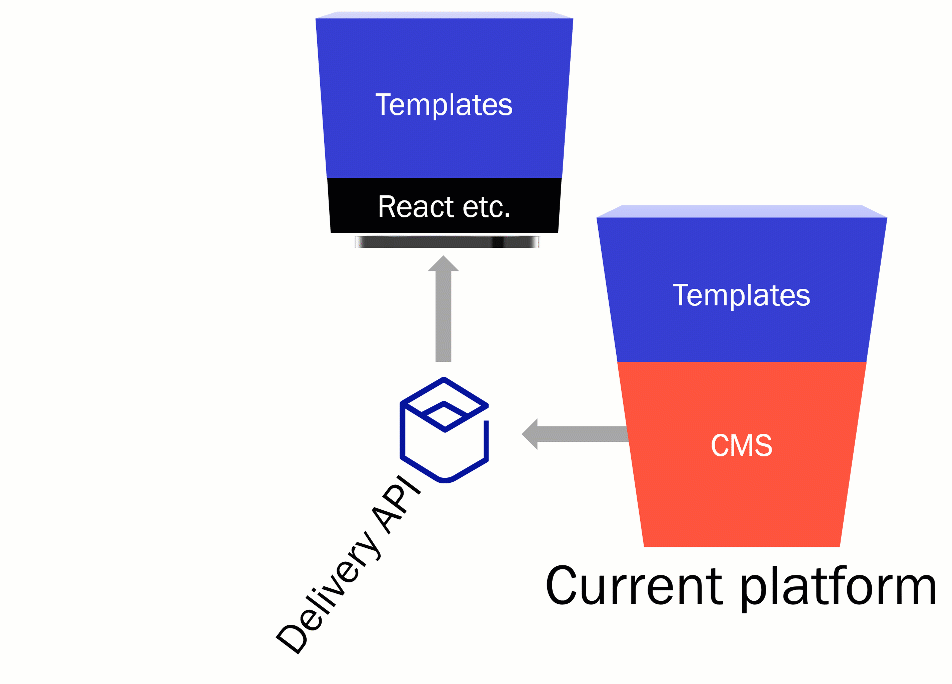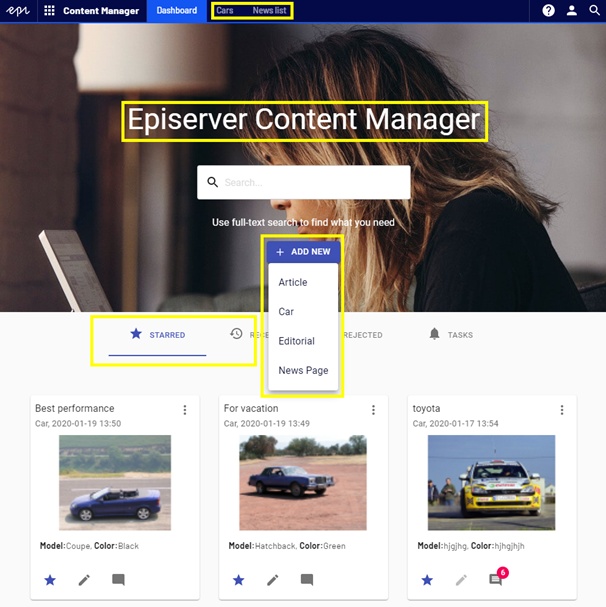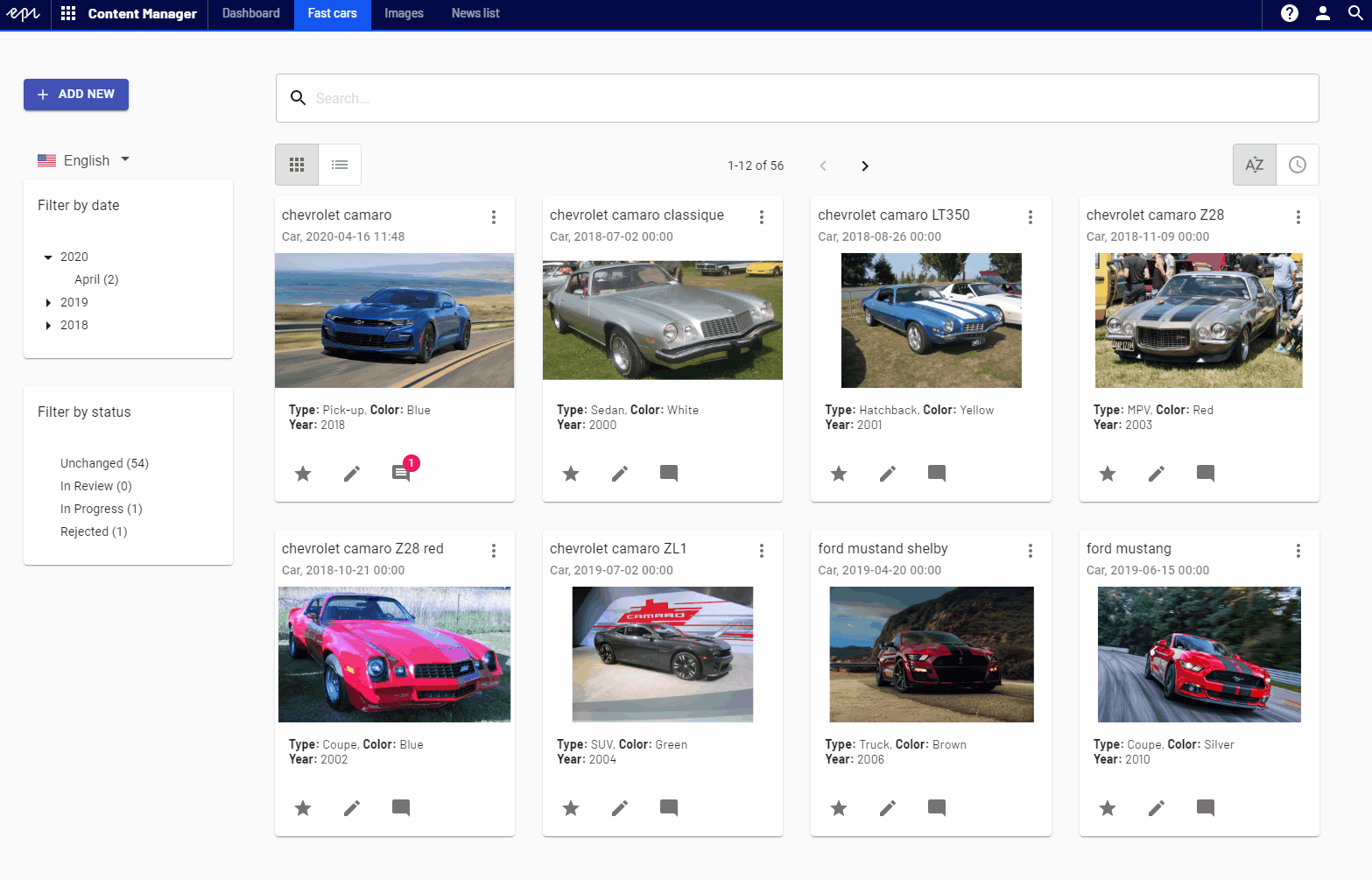Episerver in microservices paradigm
“A microservices architecture is an approach to build a server application as a set of small services. That means a microservices architecture is mainly oriented to the back-end, although the approach is also being used for the front end. Each service runs in its own process and communicates with other processes using protocols such as HTTP/HTTPS, WebSockets, or AMQP. Each microservice implements a specific end-to-end domain or business capability within a certain context boundary, and each must be developed autonomously and be deployable independently. Finally, each microservice should own its related domain data model and domain logic and could be based on different data storage technologies (SQL, NoSQL) and different programming languages.”[1]
In Microservices architecture generally, contents are also served as a service, aka CaaS. The term CaaS refers to focus on managing structured contents that some restful/web services or feed that other subscribers or applications could consume. CaaS can be referred to as an abstraction on top of a headless CMS delivered via SaaS. A headless CMS is considered a good candidate to use in a microservices architecture. Generally developing a microservice is simple but overall architecture is complex. Planning a strong architecture is a key in microservices-based architectures. Selecting the right CMS is also one of the complex questions if a business is looking for some advanced CMS with features like personalization, analytics, and AI.
Is EPiServer Headless CMS a fit in the microservice landscape?

- In EPiServer Headless, contents are served as JSON via a restful API so any programming language can consume.
- Provide content for native applications that are not HTML-based and Independence to integrate any new channel as we are not bounded with the CMS functionalities.
- It is Pluggable and configurable web API
- Support localized content and multi-site scenarios.
- Support common querying, filtering, and sorting scenarios, able to query contents through Content Search API providing robust filtering and sorting via OData syntax
- Support returning access-controlled and personalized content where required.
- Scaleable and secure, Docker could be an option but might not be the best option to set up EpiServer Headless CMS. "Episerver chose Microsoft Azure to support its Customer-Centric Digital Experience Platform, using Azure Kubernetes Service (AKS) as the orchestration engine for high-availability multitenant microservices and Azure App Service for easily scalable web app deployment". By default supports OAuth and cookie-based authentication, However, it is allowed to customize the authorization flow and use your preferred authorization mechanism like AzureAD or GitHub.
- Framework agnostic features such as on Page Editing can be used with any javascript framework such as Angular, React, or Vue.
EPiServer Headless
https://world.episerver.com/documentation/developer-guides/content-delivery-api/

Future Of EPiServer Headless
https://world.episerver.com/blogs/martin-ottosen/dates/2019/12/asp-net-core-beta-program/

Contextual considerations
Conceptually a microservice can be derived as a bounded context in a domain-driven design where each bounded context should have its own model and database. EPiServer CMS as a whole should be considered as a single bounded context. Content in itself can’t be divided further into microservices-based into their types (Images, Textual, or Pdfs).
Content Considerations
In EPiServer a content item is not necessarily only a web page, it may not have an addressable URL and it may be just a container for data that can be seen as a database record. Sometimes, the same piece of content can be used on a page, on social media or in print which means the content is no longer assigned to a specific channel. Usually, those kinds of content items are simple with only basic property types and some metadata. Content Manager is available to create this kind of content.


SPA implementations with Headless CMS with OPE support
https://world.episerver.com/blogs/remko-jantzen/dates/2020/5/introducing-foundation-spa-react/
https://github.com/episerver/musicfestival-vue-template
References
[1] - https://docs.microsoft.com/en-us/dotnet/architecture/microservices/
https://customers.microsoft.com/en-gb/story/786162-episerver-partner-professional-services-azure

Comments